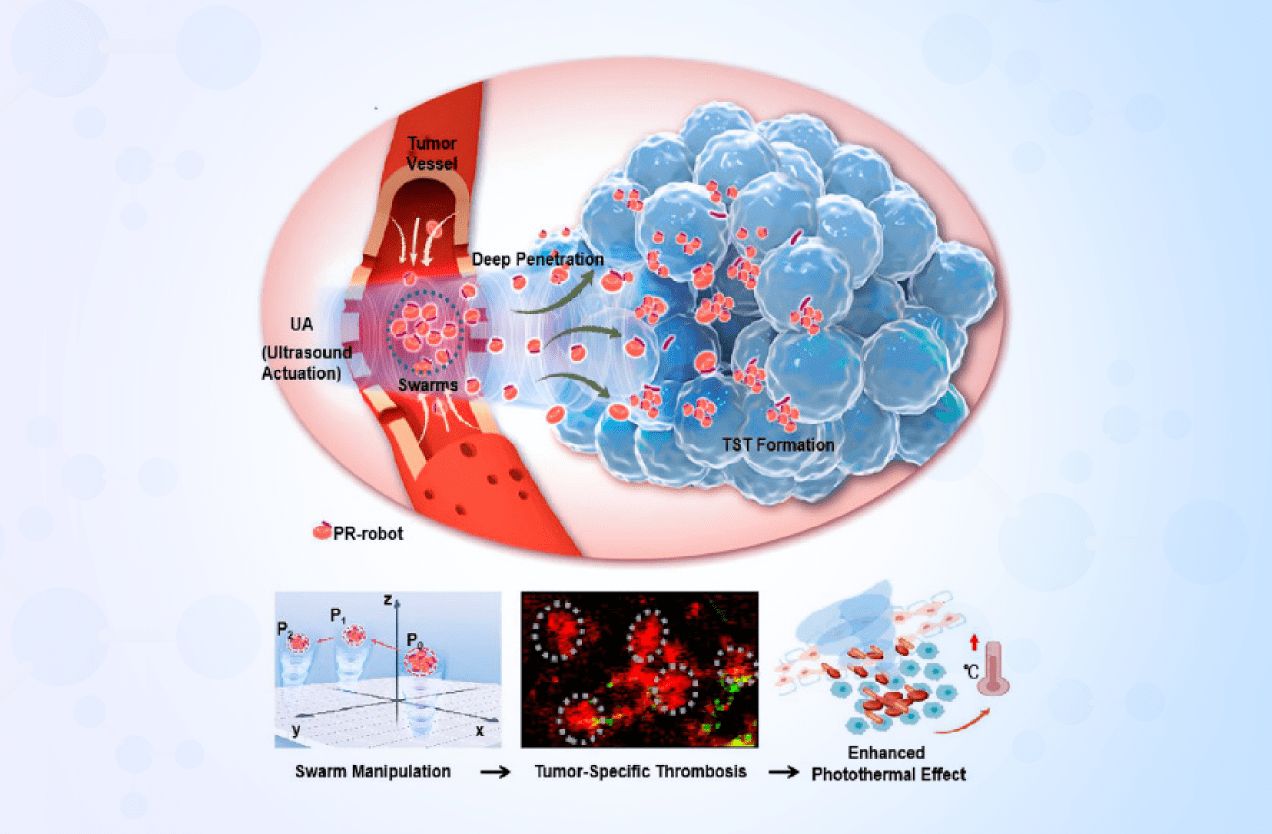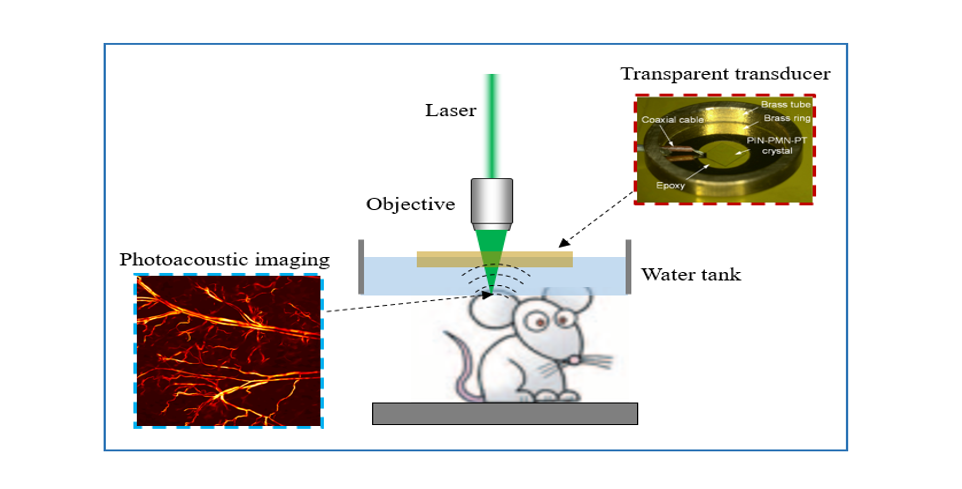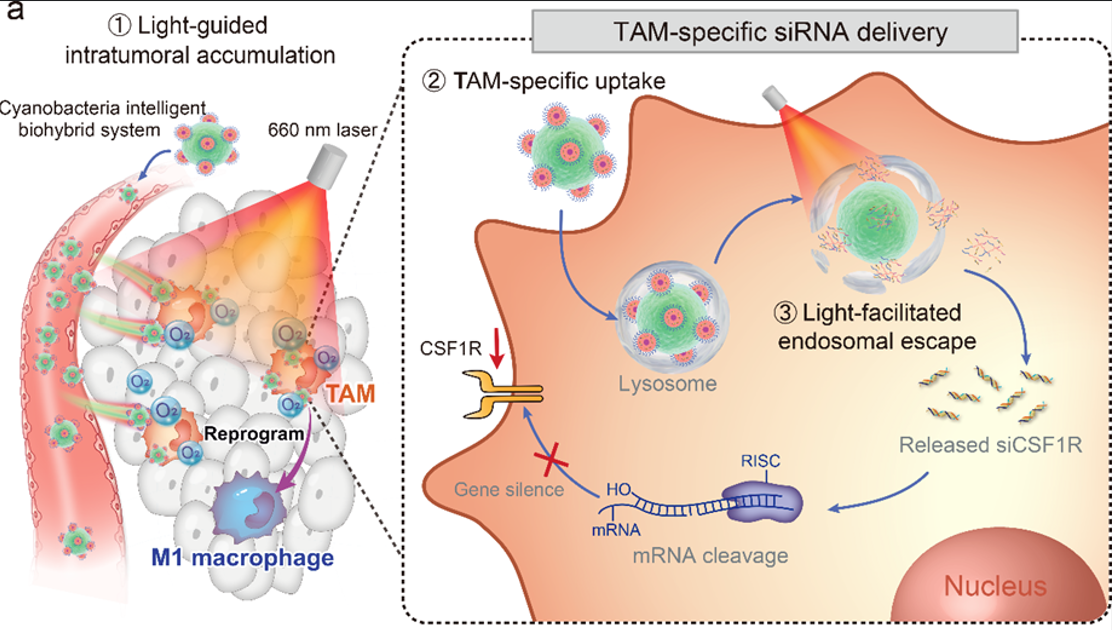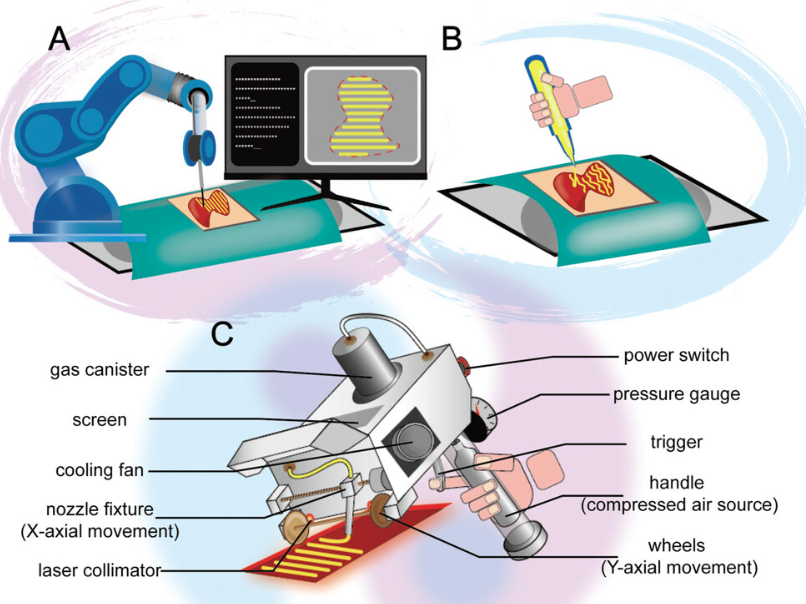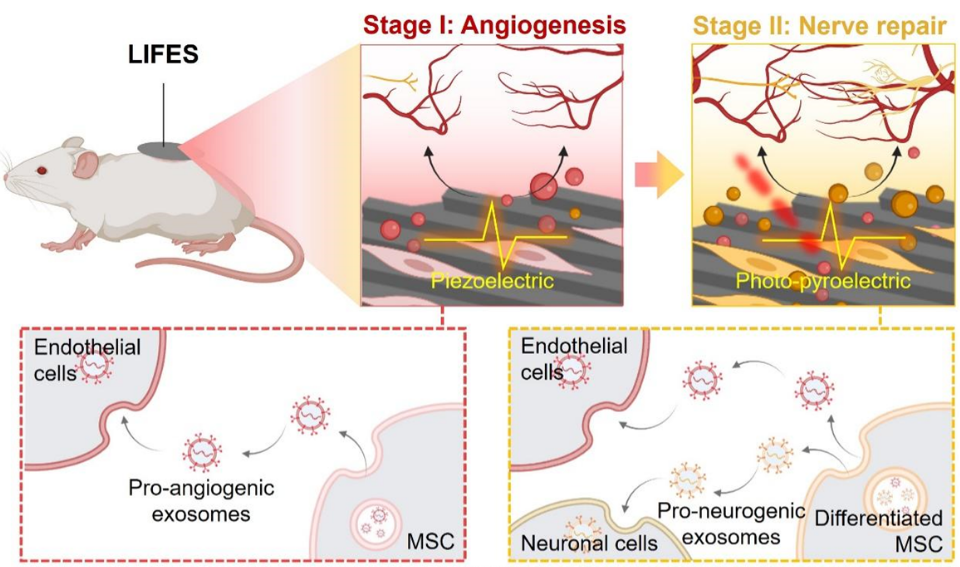
SIAT Research
-
Dec 26, 2024Researchers Develop Ultrasound-driven Bacteria-cell Biorobot for Cancer TreatmentThis study introduces a biomicrorobot capable of swarm control through remote ultrasound actuation, both in vitro and in vivo. In a study published in Trends in Biotechnology on Dec. 20, a research team led by Prof. CAI Lintao and Prof. MA Teng from the Shenzhen Institutes of Advanced Technology (SIAT) of the Chinese Acade...
-
Dec 17, 2024Researchers Develop Ultrasensitive Transparent Ultrasonic Transducer for Photoacoustic ImagingResearchers develop an ultrasensitive, broadband transparent ultrasonic transducer based on a novel transparent piezoelectric single crystal, achieving high-resolution, large-field-of-view, and rap... Recently, a team led by Prof. ZHENG Hairong, Prof. QIU Weibao, and Prof. LIU Chengbo from the Shenzhen Institutes of Advanced Technology, Chinese Academy of Sciences, in collaboration with Prof. LI...
-
Dec 16, 2024Researchers Develop Novel Photopyroelectric Tweezer for Versatile ManipulationResearchers report a novel photopyroelectric tweezer (PPT) that combine the advantages of light and electric fields. Using a rationally designed photopyroelectric substrate with efficient and durab... Recently, a research team led by Dr. DU Xuemin from the Shenzhen Institutes of Advanced Technology (SIAT) of the Chinese Academy of Sciences, has reported a novelphotopyroelectric tweezer (PPT) tha...
-
Dec 04, 2024Can the Host Run Fast Enough to "Eliminate" the Virus?These results challenge the notion that host migration speeds up virus transmission, instead showing how it can suppress virus spread. A research group led by Prof. FU Xiongfei at the Shenzhen Institutes of Advanced Technology (SIAT) of the Chinese Academy of Sciences has developed a synthetic host-virus co-propagation system that...
-
Nov 26, 2024Researchers Develop a Light-Guided siRNA Delivery System Based on CyanobacteriaThe proposed system offers a promising approach for developing both efficient and safe nucleic acid delivery vectors and for advancing tumor photoimmunotherapy. Recently, a research team led by Prof. CAI Lintao from the Shenzhen Institutes of Advanced Technology (SIAT) of the Chinese Academy of Sciences, developed an innovative intelligent light-guided bio...
-
Nov 22, 2024Scientists Develop Smartphone-Controlled Handheld Bioprinter for Skin Wounds DressingThis study provides an innovative tool for tissue regeneration, offering a new solution for efficient and immediate medical intervention. A research team led by Prof. ZHAO Xiaoli from the Shenzhen Institutes of Advanced Technology (SIAT) of the Chinese Academy of Sciences, together with collaborators, has reported a smartphone-contro...
-
Nov 22, 2024Researchers Develop a miRNA-tunable Living Interface for Neurovascular RemodelingThis study reported a living interface with unique functionalities of durable secretion of bioactive exosomes with tunable contents and miRNA cargoes, effectively promoting neurovascular remodeling. A research team led by Dr. DU Xuemin from the Shenzhen Institutes of Advanced Technology (SIAT) of the Chinese Academy of Sciences, has reported a living interface with unique functionalities of du...
-
Nov 15, 2024Novel Method for Accurately Predicting Cell Abundance Across Multiple Tumor TypesThis study offers robust methods to better understand the tumor microenvironment, enhance prognostic evaluation, and facilitate the development of targeted therapies. Recently, a research team led by LI Xuefei at the Shenzhen Institutes of Advanced Technology (SIAT) of the Chinese Academy of Sciences, in collaboration with TIAN Liang’s team from the Hong Kong B...
